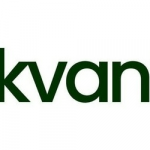Toshiba, Orange show QKD can be viable over existing fiber networks

Toshiba Europe Ltd., which has been a major player thus far in efforts to advance quantum key distribution (QKD) technology, has worked with French telecom giant Orange to demonstrate the viability of deploying QKD on existing commercial networks, a finding which could greatly enhance the prospects for telecom network operators to quickly deploy QKD without breaking the bank.
A new research paper from the partners shows how QKD can be deployed on existing fiber and alongside their current data services, which they said could help network operators reduce the cost of implementing QKD by removing the need to invest in dark fiber as a dedicated quantum fiber infrastructure.
This is not Toshiba’s first go-round with a telecom network operator, as it was a partner in BT’s QKD-enabled metro network trial in the UK that was launched last year. It also has worked with telecom operator KT in South Korea, and partnered with telecom equipment vendor Ciena and JPMorgan on QKD as well. Orange also has done its fair share of work to explore QKD. The company is part of the EuroQCI consortium looking to set up a QKD-enabled satellite network.
Through Toshiba’s work with Ciena, it advanced the notion of using Wavelength Division Multiplexing (WDM) to set up separate, interference-free wavelengths to enable QKD to operate on existing fiber networks. However, previous tests have shown issues that affect the viability of such deployments, such as the possible number and power of the data channels, the effective network distance and the secure bit rate (sometimes called secure key rate or SKR) achieved, Toshiba and Orange said.
Since last year and throughout this year, Toshiba and Orange conducted tests at the Orange Labs in Lannion, France, to validate the co-existence of QKD and classical data signals and research how different factors affect the efficiency of sending both classical and quantum signals over existing fiber networks running classical data services. They were able to demonstrate the effective co-propagation of the classical and quantum signals with high secret bit rates, allowing them to co-exist while still being capable of effectively delivering keys at distances of up to 70 km, showing great promise for deployments in metro networks in built-up areas, the partners said.
The researchers also made new findings that have led to the proposal of an updated metric to help measure the efficiency of such systems. Based on this metric, they determined that the new QKD implementation outperformed previous co-propagating experiments. The new metric developed by the researchers, which acknowledges that power (and not the number of channels) has the most impact on efficiency, may aid operators in network and service planning, the companies said.
“This work shows that we can have co-propagation of the quantum channel with WDM data channels in the same fiber, without changing the engineering rules of the operational WDM links. The high secret key rate obtained in this configuration is very promising for the introduction of QKD in operator’s networks,” said Paulette Gavignet, Senior Expert in Optical Communication at Orange Innovation.
“Our commitment to security and innovation has led us to push the boundaries of Quantum Key Distribution (QKD) solutions,” said Laurent Leboucher, Group CTO and SVP, Orange Innovation Networks. “It could be a key to offer unparalleled protection for optical transport networks. Together with Toshiba, we showed that it is possible to introduce new security functions in the operators’ networks without requiring the use of dedicated fibers. With this cost-effective approach, we pave the way towards a digital fortress, guaranteeing the security of our customers’ most valuable data.”
“The rise of quantum computing has serious implications for current security methods and organizations need to take action now to mitigate risks to their communications,” said Dr Andrew Shields, Head of the Toshiba Quantum Technology Division. “Validating the ability of our QKD technology to protect transmissions while using existing fiber networks is a huge step forward in making quantum-secure communications accessible for today’s organizations. Working with global operators such as Orange to conduct research and improve our technology has been vital, and we look forward to continuing our work in this area.”
For further details about how the project progressed and the results that were achieved, read the research paper.
Dan O’Shea has covered telecommunications and related topics including semiconductors, sensors, retail systems, digital payments and quantum computing/technology for over 25 years.























